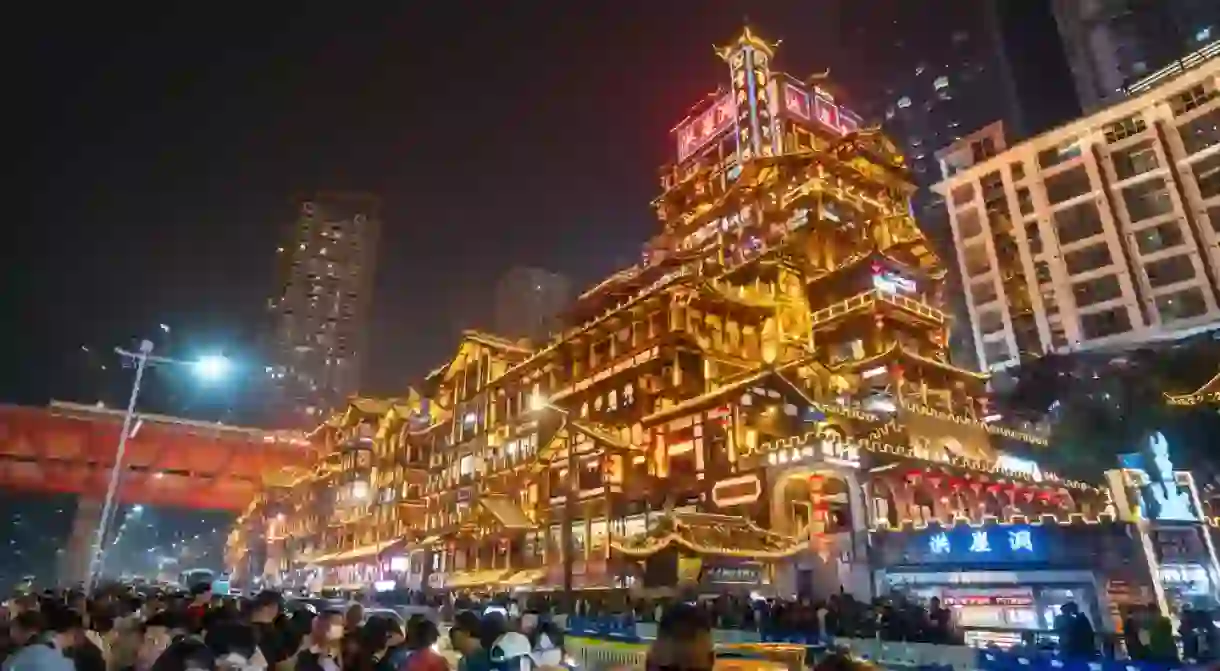10 Things To Do And See In Sichuan, China

Known for its spicy cuisine and friendly people, Sichuan is definitely one of the most popular provinces to visit in China. Home to energetic cities like Chengdu, breathtaking natural parks and wondrous wildlife, the region is highly ranked for cultural and historical significance, and is a place of vibrancy and importance in the largest country in the world. Here’s our definitive guide to the 10 best things to do and see whilst in Sichuan, China.
Jiuzhaigou Park, Sichuan
Park

Chengdu Du Fu Thatched Cottage Museum
Historical Landmark

This site is the former home of the famous Tang Dynasty Poet, Du Fu. According to history, the poet lived at this site for four years to avoid the An-Shi Rebellion, and during this time he wrote over 240 revered poems. The cottage has been renovated over time but still retains elements of Du Fu’s original dwelling, as well as the additions of Qing Dynasty architecture and a large, flourishing and vibrant garden. The historical and cultural importance of this site definitely elevates it as a must-see site in Sichuan.
Baoguo Temple Ancient Architecture Museum
Museum
Leshan Giant Buddha
Historical Landmark
This stone statue carved during the Tang Dynasty stands 71 meters high at the converging point of the Minjiang, Dadu and Qingyi rivers. Travelers can view the Leshan Buddha during a river tour, where boats float down the river and pass the sculpture, or during a hiking expedition, where groups pass along the top of the cliff as well as scale the feet of the Buddha. The Leshan is the largest stone Buddha sculpture in the world, and has been listed as a UNESCO world heritage site since 1996; don’t miss it!
Chengdu Research Base of Giant Panda Breeding
Natural Feature
The largest facility dedicated to protecting both the giant panda and the red panda, the Chengdu Panda Research Base was founded in 1987 when six pandas were rescued from the wild and given shelter here, and has since flourished into a facility which houses 83 giant pandas. Newborn pandas as well as full-grown adults can be viewed within several habitats throughout this well-maintained park. In addition to the many panda enclosures, the park also has several red panda facilities, a lake for swans and koi fish, and a large garden.
Dujiangyan Irrigation System
Historical Landmark

Considered by many historians to be one of the most vital infrastructures for a developing society, the Dujianyan Irrigation system was built in 256 B.C.E, and is still in use today. It is responsible for irrigating over 5,300 square meters of land, and vitally helps to prevent floods in the area. Visitors can also see the Two Kings Temple located on the riverbank here.
Pedestrian Street
Historical Landmark
One of the many famous ‘snack streets’ in Chengdu, Jinli stands out for its overall atmosphere of fun and vibrancy. Visitors can enjoy elegant candy creations and traditional Chinese snacks here, and can relax at the many bars and restaurants dotted along the walkway. In addition to the food, the traditional Qing Dynasty architecture is one of the reasons this place was named a ‘Top Ten City Commercial Pedestrian Street’ in 2006. Over 500 meters long, Jinli can easily provide a full evening of activity for those who wish to snack and shop all night long!
Emei Mountain
Natural Feature
Sanxingdui Museum
Historical Landmark
This archeological site is located west of Guanghan city, and is a spot which marked a key discovery for the ancient Shu people. Sanxingqui translates to “three star piles” in English and represents the three earth mounds at the site. Discovered by a peasant digging a ditch in 1929, this lucky discovery lead to the excavation of over 1,000 cultural relics. The museum provides tours in both English and Chinese for guests who want to learn about the history surrounding the artifacts that were uncovered here.
Huanglong
Historical Landmark

This national park is renowned for its cascading waterfalls and lush, verdant vegetation. Literally translating to “yellow dragon”, its name comes from the color of the river’s calcite deposits and its enormous size. The park also has snowcapped mountains and forests, and is home to endangered species like the giant panda. It was declared a UNESCO world heritage site in 1992, and major attractions here include Red Star Rock, Sigou and Danyun Gorge.













